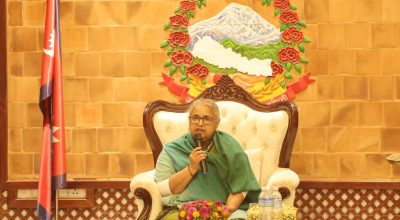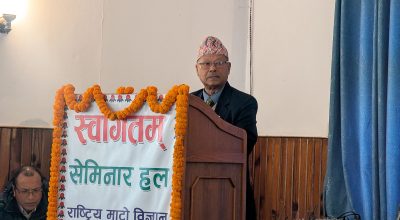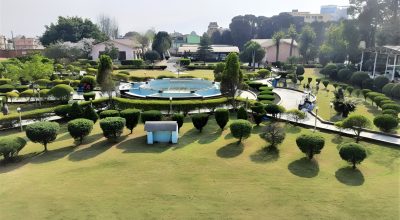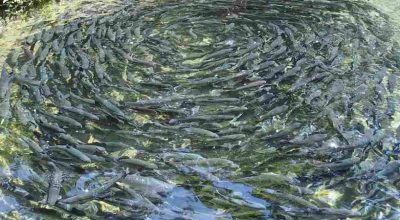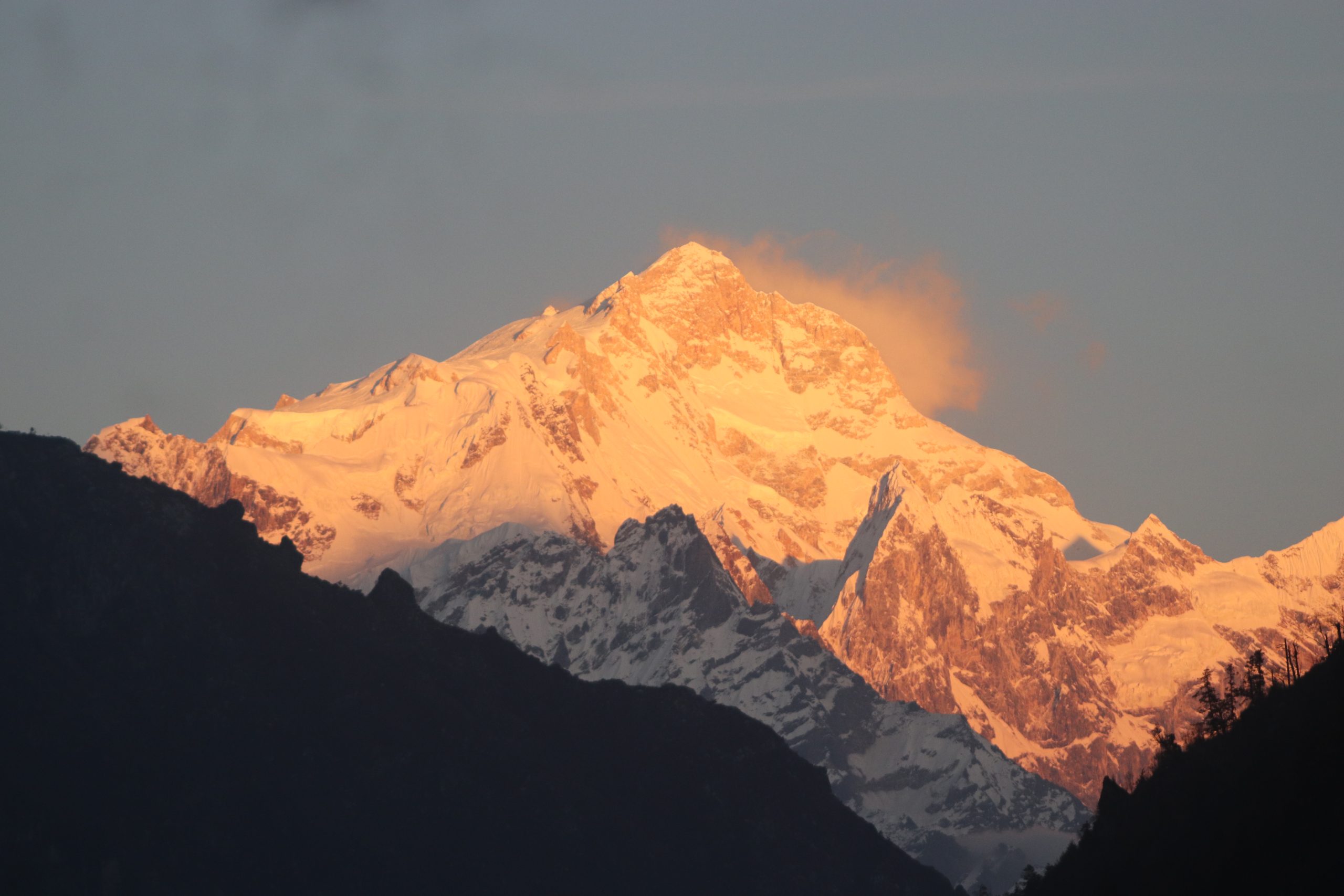
Manang, Aug 27, 2024: Picture a cold desert lying in the rain-shadow in the foothills of the Himalayas, the innumerable mountain peaks reaching out to the grey skies almost touching it. Now consider the other side of the landscape—one that is verdant with lakes and waterfalls; gurgling rivers and streams. The constant in both these landscapes is the alpenglow that blushes the entire region right before sunrise and just as the sun goes down.
This is Manang, one of the most beautiful locations in Nepal. A part of the Gandaki province in central Nepal, Manang is also a part of the Annapurna Circuit Trek often deemed as one of the best long-distance treks in the world. The circuit trek encompasses Lamjung, Manang, Mustang, Myagdi and Kaski.

Those familiar with Manang and its terrain agree that traversing through Manang is not a cakewalk. The roads are narrow with deep gorges cutting through high cliffs. But those who do take on the challenge also know that every step is worth taking. “It was a death-defying trip on a jeep to reach Chame (the district headquarters of Manang) from Besisahar. The trek onwards was also arduous. But when I reached Tilicho Lake and sat by its shore, I forgot all about the difficult journey,” said Rishiram Basnet from Lamjung, who had trekked to Tilicho Lake in November last year.
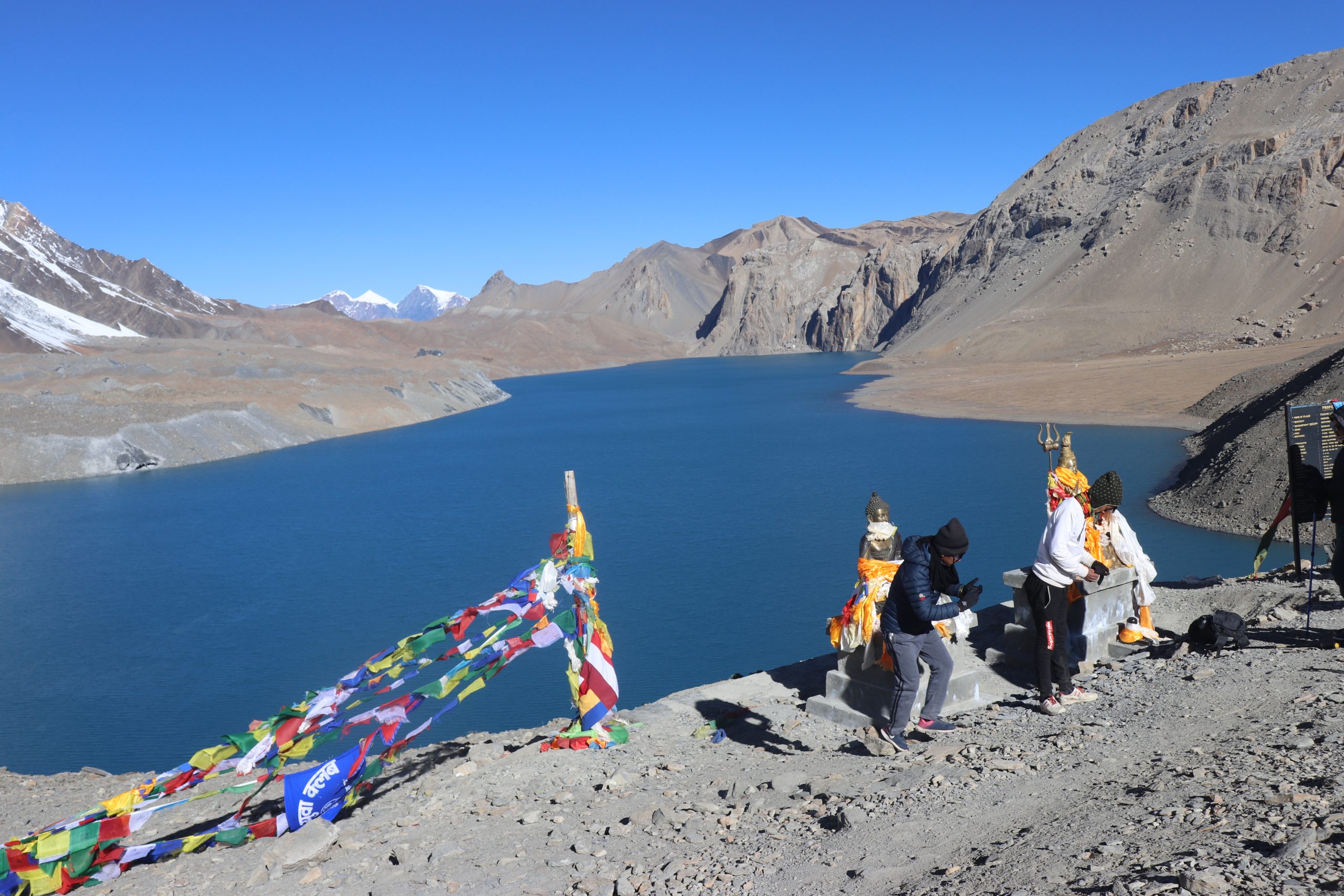
A road linking upper Manang villages including Khangsar and Manang village came into operation four years ago, shortening the travel time by days. The 65km long Besisahar-Chame road section can be covered in around six hours on fair-weather days. Earlier, it would take three to four days to reach Chame from Besisahar.
Road connectivity in the region has opened the mountain district to travellers, experienced and novices, says Binod Gurung, chairman of tourism entrepreneurs committee in Manang. “Manang features on every traveller’s bucket list but earlier it was not easy for everyone to make it here. But now we have travellers coming in even during the offseason,” he said. According to him, September to November and March to May are the favourable seasons to visit Manang.
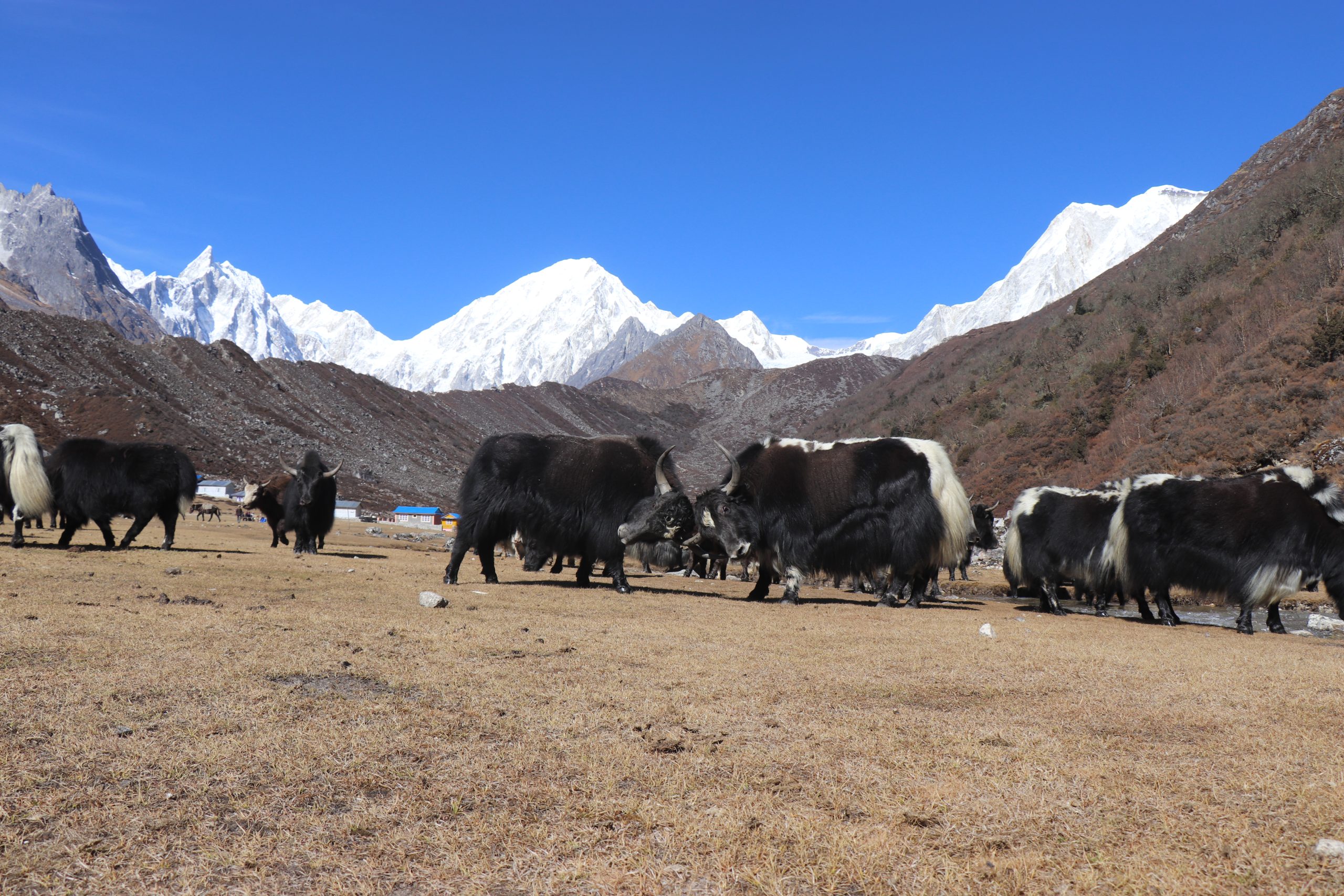
Unofficially, the district is divided into Upper Manang and Lower Manang. In Upper Manang, the local culture, language, lifestyle, and clothing takes influence from those in the Tibetan plateau while the locals of Lower Manang are closer in habit to their neighbours in Lamjung. The first settlement you’ll come across as you enter the Manang district is Talgaun sitting 1,700 metres above sea level.
To experience Manang in its entirety, one visit is definitely not enough. But there are some places to see and things to do on your first visit that will give you a pretty good idea of what this mountainous district is all about.
Trek to Tilicho Lake
Tilicho, an alpine lake situated at an altitude of 4,919 metres above sea level, is a must-visit for those visiting or passing through Manang. Tilicho trek is one of the side treks in the Annapurna Circuit Trek. To reach Tilicho, you’ll have to get on a vehicle to Khangsar from Chame covering about 31km in three hours. Your trek to the lake starts from Khangsar. But before you put on your trekking boots, a stay in Khangsar is highly recommended. This old village will take you right back in time when life was about simplicity. The stone houses that you see in the villages speak of a time when concrete structures were yet to make it to the mountains of Nepal. There are several hotels and lodges in Khangsar if you choose to stay in the village before embarking on the trek to Tilicho Lake.
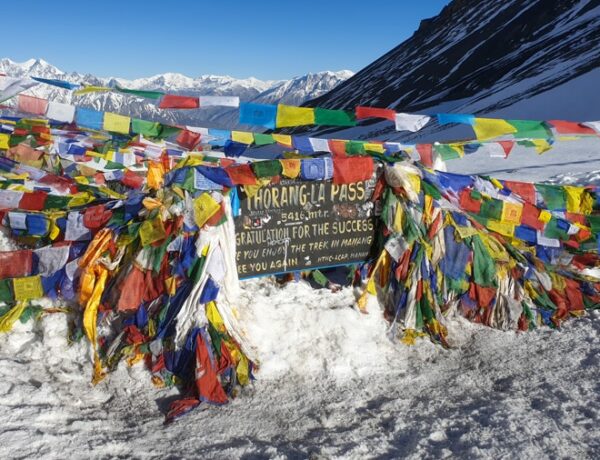
To reach the lake, you must first reach the Tilicho Base Camp. It’s a five-hour trek from Khangsar through Shreekharka to the base camp.
The entire route treats you to incredible views of Annapurna range, Manaslu and Gangapurna. The trail is rocky, tough and unforgiving but also equally rewarding. However, solo travel is not advisable; always travel with a guide or with someone who has experience in high altitude treks.
Most trekkers camp at the base camp overnight and start early the next day to the lake. The trek from the base camp to the lake can be completed in about six hours.
Attempt Thorong La pass
Thorong La Pass is the highest point on the Annapurna Circuit Trek. The pass, which lies at an altitude of 5,416 metres, is between Manang and Mustang. The pass was first opened to foreign tourists in 1977, and since then has seen a steady stream of travellers making their way to the pass. According to Annapurna Conservation Area Project, thousands of tourists climb the high altitude mountain pass each year. “The number of domestic tourists crossing the pass has also increased in the recent years,” said Baburam Tiruwa, an official at the project.

High altitude trekkers usually cross Thorong La pass from Manang and descend to Mustang. Trekkers spend at least a day in Thorong La Phedi and another in Yak Kharka before attempting to reach the pass. It takes about two days to reach Thorong La Phedi through Yak Kharka and Ledar from Manang village. The trek starts in the early hours since the area is susceptible to strong winds as the day progresses.
Visit NarPhu Valley
Nar and Phu are two high altitude settlements nestled in the valley of Nar Khola. The two villages are about 130km from Chame and you’ll have to cross two high alpine passes—Thorong La Pass and Kang La Pass (5,306 metres). The two villages were opened for visitors only from 2003 onwards. As per the latest national census conducted in 2011, the combined population of the two villages is 615 between 128 families.
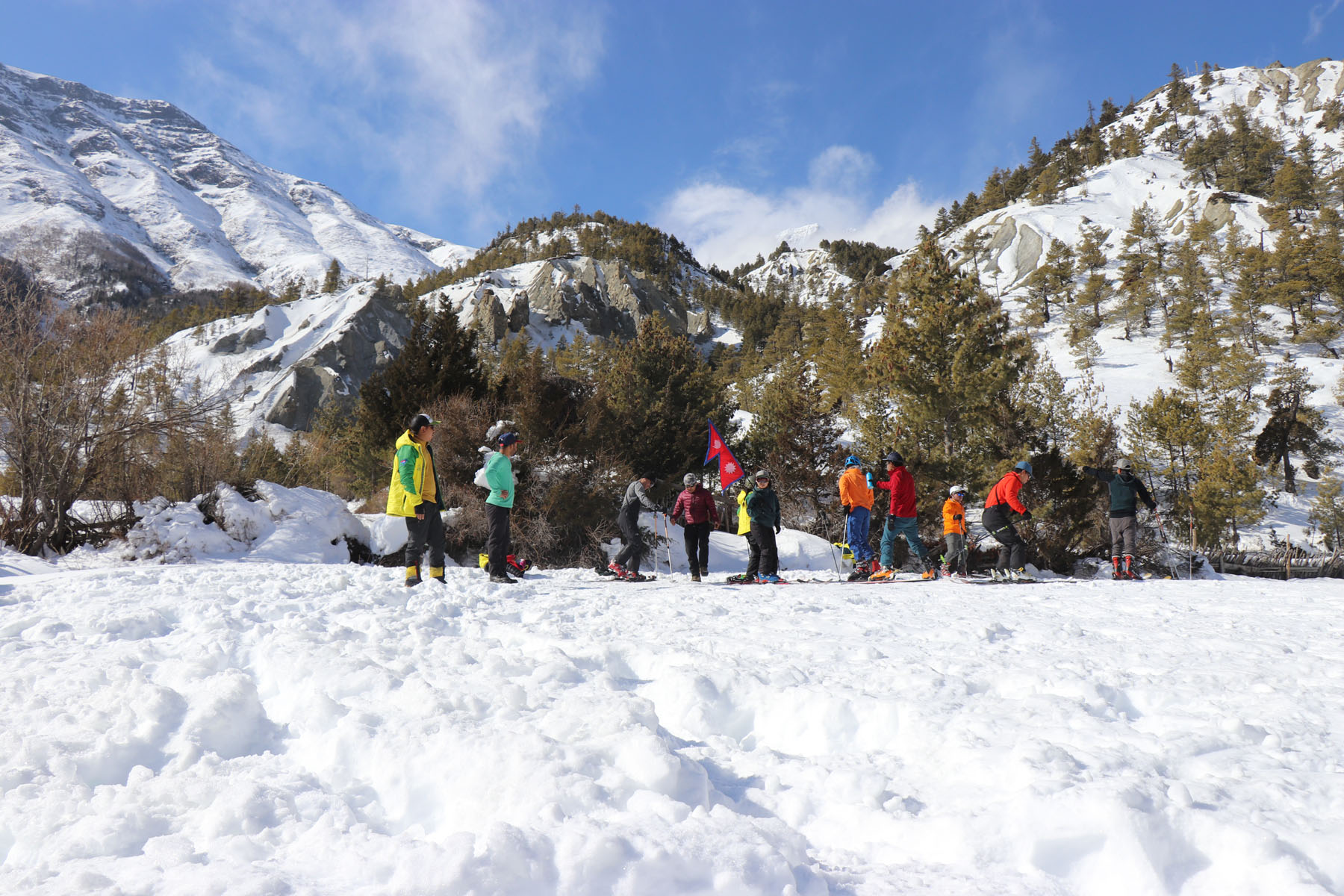
As you descend towards NarPhu valley, you’ll see a change in the landscape. Himalayan pine trees thin out giving way to sparse vegetation, with houses scattered here and there. You’ll come across ancient gompas, and equally ancient stone houses that are native to the area. A gate marks the entrance to the valley, and once you enter the gate, you’ll be transported to a place frozen in time. The quiet of the place is drowned by the stillness in the air. Since the two villages opened to outsiders only recently, the locals can still seem a bit wary of strangers but once you connect with them, try to understand their way of life, you’ll find them welcoming you into their warm hearths.
The main occupation of the locals here is yak herding but there are also those who engage in small-scale farming of barley, wheat, and buckwheat. The spoken language in both Nar and Phu takes heavy influence from the Tibetan language with both Nar and Phu languages differing from one another phonologically and lexically.
Spend a day at apple orchards
The cold climate in Manang is suitable for growing apples and the locals have been farming apples for decades using traditional methods, and have supplied them to markets across Nepal. But an apple farm operated by Agro Manang Pvt Ltd in Bhratang, spread over 735 ropanis of land, is one of the major attractions for tourists visiting the area.
The harvest season—September, October and November—sees the most number of tourists visiting the apple farm which produces three types of apples—Gala, Golden and Fuji. The orchard that lies at an altitude of 2,900 metres above sea level came into operation in 2015.
Nestled among tall trees of the forest, the orchard also houses a mountain lodge. Most trekkers on the Annapurna Circuit Trek stop by the orchard to rest before continuing the arduous trek.
Find Milarepa cave
Milarepa cave is one of the side treks in the Annapurna Circuit Trek. The cave is associated with Milarepa, a Tibetan Buddhist philosopher, who is known to have spent considerable time meditating in the cave in modern-day northern Nepal. The cave site, located at 4,250 metres above sea level, may not be the most-visited site in Manang but is a must-visit for it may be geographically isolated but the landscape and topography along the way are visually extraordinary.
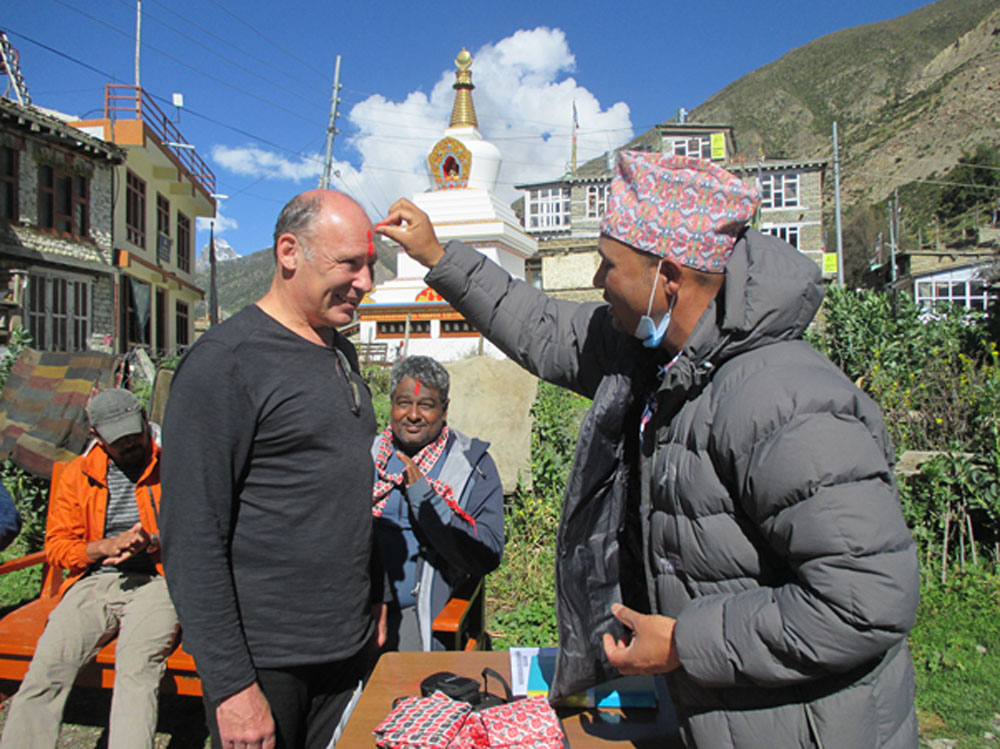
One variation of the story associated with the cave goes something like this: a hunter from Manang reached the cave area chasing a deer. The hunted animal took asylum in Milarepa’s cave and escaped death at the hands of the hunter. Milarepa is then said to have reformed the hunter’s ways. In close proximity to the cave is a spring, a gompa, and in its vicinity the bow which was used by the hunter. “The bow sits near the cave even today,” said Chhiring Lopsang Gurung, a local of Manang village.
The pathway to the cave is two hours from Bhraka, a small village right before Manang village. The cave is about 10 feet deep and houses a statue of Milarepa depicted in his meditating form.
Soak in the unique Himalayan culture
Manang is also a land of numerous unique festivals. Sol Bahadur Gurung of Tachai, who is an active participant in all the local festivals, said, “We have a unique culture, therefore our festivals are also unique. Our festivals reflect our history and traditions.”
In the upper regions of the district, a festival of the horses known as Yartung is celebrated sometime during the monsoon season. The festival is celebrated after the harvest of monsoon crops signalling the arrival of the cold season. The name of the festival is derived from the Tibetan language where ‘Yar’ means monsoon and ‘Tung’ means horse. This festival is celebrated for five days when the local youths ride unsaddled horses. On the last day of the festival, the horse riders, head to the Manang gompa to receive blessings from the Lama (religious leader).
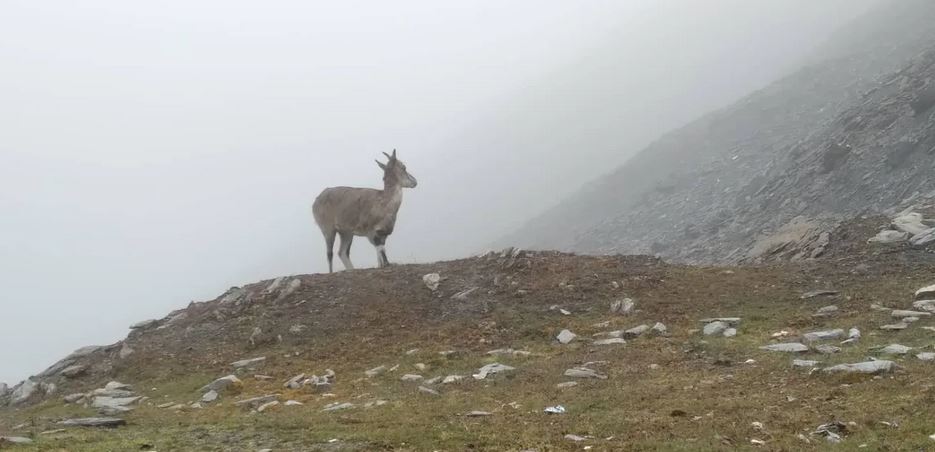
Another famous festival which is celebrated in all the four local units of the district is Metha. Also known as Lajyang Dhajyang, the festival is celebrated by organising archery events to test the shooting skills of the locals. The festival is celebrated for five days straight. Practicing archery protects them from diseases and brings prosperity, say locals.
Similarly, Kaanso Festival is another unique festival celebrated by the people of Manang in October-November. The festival is mainly celebrated at Khangsar area, the doorway to Tilicho lake. Religious leaders perform various traditional dances while youths carry wooden poles and dance the day away to keep misfortunes at bay.
Mr Nabin Lamichhane is the travel writer and journalist based in Manang district.





